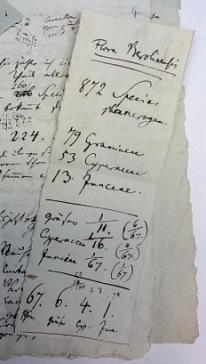According to a famous formula going back to Immanuel Kant, the late eighteenth and early nineteenth centuries saw the transition from natural history to the history of nature. This project analyzed changes in the media, collecting practices, and institutions of natural history that underwrote this epochal change. Its primary empirical focus was on the many posthumous re-editions, translations, and adaptations of Carl Linnaeus's taxonomic works that appeared throughout Europe in the century between the publication of the tenth edition of his Systema naturae (1758) and Charles Darwin's Origin of Species (1859). The guiding hypothesis of the project was that classical natural history became an "archival" science in exactly the same sense in which physics and chemistry became experimental sciences, namely by letting nature speak through "artificial" means and media. The rules and conventions of Linnaean nomenclature and taxonomy—often denounced as "artificial" by contemporaries as well as later commentators—articulated the growing mass of facts that naturalists collected in fundamentally new ways and thus produced phenomena that eventually became the very object of naturalists' quest for the order of nature. Just as records in a well-kept archive, species became units that were added to or eliminated from collections, kept track of in lists and catalogs, and counted and distributed among naturalists and their collections in ever new ways.
The widespread practice of noting the number of species described in natualists' publications and calculating the number of "new" species discovered provides a good example for the epistemic effects of the new, archival regime that emerged with Linnaean natural history. This practice was facilitated by the habit of routinely numbering species entries in taxonomic literature, following Linnaean conventions. It not only allowed for a direct measure of the growth of natural history knowledge but also individual authors' own contributions to that growth. In addition it fed into early nineteenth-century proposals for a quantification of natural history, such as Alexander von Humboldt's "arithmetical botany," which tried to characterize floral regions of the world by the different proportions of plant families in the overall number of species. Species numbers, originally a purely conventional means to allow for unambiguous citation, became a research object of their own.

